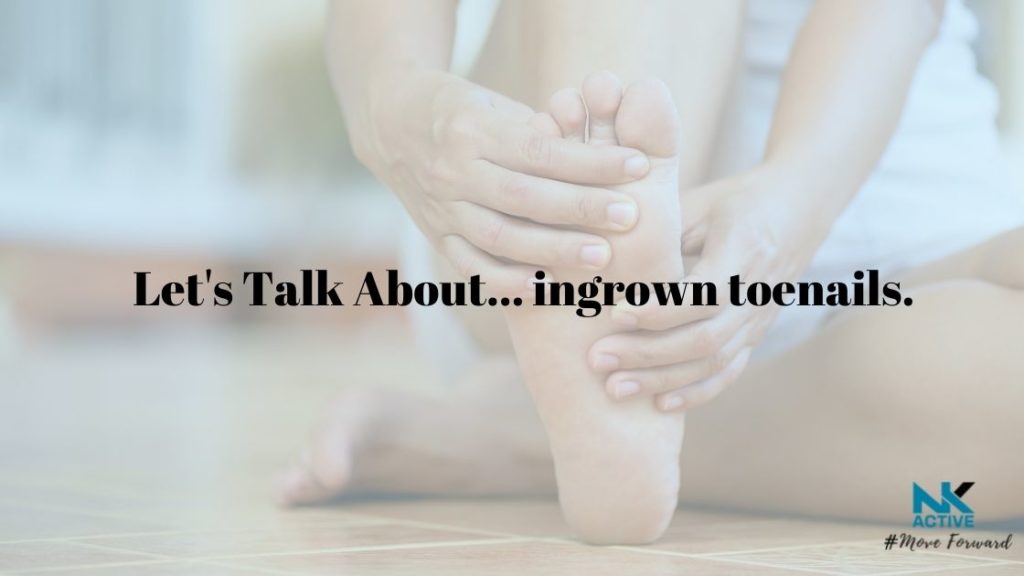
Let’s Talk About… ingrown toenails and nail surgery.
In our January enewsletter (sign up here… ), NK Active Podiatrist and Clinical academic Charlie, wrote about ingrown toenails – the what, why, symptoms and how we treat this in clinic.
In our NK Active Romsey clinic, we are offering free nail check appointments to see how we can help you and to assess if it is an actual ingrown nail causing your pain and prescribe a treatment plan.
What is an ingrown toenail?
Ingrown toenails, also known as Onychocryptosis, is a painful condition of the toe. It occurs when a sharp nail edge digs into the skin at the side of the toe. Pain and inflammation of the skin down the side of the nail often occurs first and it can affect any toe.
Why does this happen?
There are many reasons why you can develop an ingrown toenail:
- Genetically your nails may be predisposed to splaying or curling
- Tight fitting footwear/socks can irritate the nails and surrounding soft tissue
- History of injury or trauma
- Nail health (weak or brittle nails, excessive sweating)
- Medical conditions and medication affecting nail health
- Poor nail cutting technique
- Nail picking and/or nail biting
Who can get an ingrown toenail?
Technically anyone, but teens and young adults are more likely to get ingrown toenails, compared to older adults. People with an active lifestyle can be prone to ingrown toenails if wearing the incorrect footwear or tight shoes or socks.
What are the common symptoms of an ingrown toenail?
- Pain in the toe or nail region
- Swelling around the toenail
- Inflammation (redness and tenderness) surrounding the nail area
- Discharge (blood, pus or exudate)
It is also worth mentioning the signs of infection when we talk about the symptoms of an ingrown toenail as infection can sometimes be a symptom of a nail infection – look out for a hot, swollen toe, with redness or darkening skin discolouration tracking up the foot and / or discharge (pus) from the nail edge. If you think you may have an infection, please contact your GP for a review as you may require antibiotics.
How is this condition diagnosed?
A clinical or video assessment, either by your GP or Podiatrist, can help identify the condition.
What can I do?
Initially, you can relieve the discomfort by bathing the foot in salt water for approximately 10 to 15 minutes. This can help reduce your chance of developing an infection and reduce inflammation. You may need to cover the toe with a simple dressing to keep it protected and salt bathe daily until you see your GP or Podiatrist.
If symptoms persist, or the toe is too painful, then nail surgery may be your next option.
A local anesthetic can be given to numb the toe and an operation then undertaken to remove a portion of the nail. To prevent the section of nail re-growing, a chemical called phenol is used to cauterise the nail bed.
You can find out more about nail surgery, the risks and post-op advice here and click here to book your free nail check appointment with an NK Active Podiatrist. #NKActive
